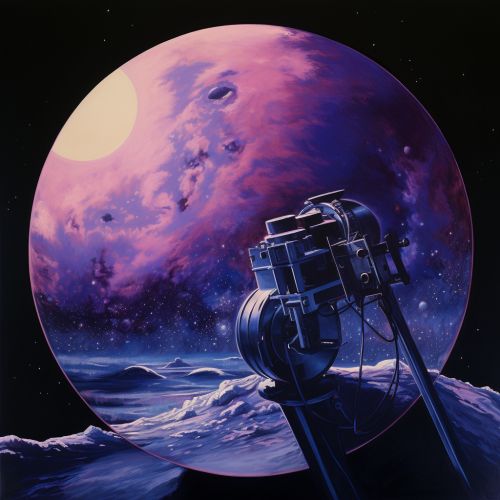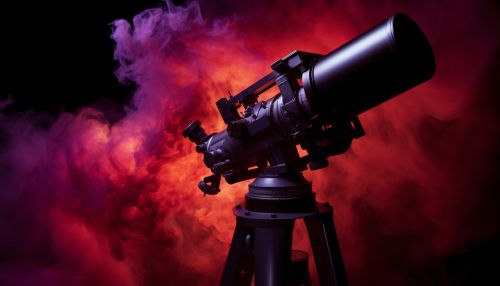Ultraviolet Astronomy and Star Formation
Introduction
Ultraviolet astronomy is a branch of astronomy that studies celestial objects in the ultraviolet (UV) part of the electromagnetic spectrum. This field of study is essential to understanding phenomena such as star formation, which is a complex process involving the condensation of gas and dust in space to form new stars.
Ultraviolet Astronomy
Ultraviolet astronomy is a specialized field that focuses on the observation and interpretation of ultraviolet light from celestial bodies. The ultraviolet region of the electromagnetic spectrum is between the visible and X-ray wavelengths, approximately from 10 to 400 nanometers. Ultraviolet observations can provide crucial information about the temperature, composition, and dynamics of astronomical objects that are not available from observations in other parts of the spectrum.
History
The field of ultraviolet astronomy began in earnest in the 1960s with the launch of the first space-based ultraviolet observatories. Prior to this, observations of the ultraviolet spectrum were limited due to the Earth's atmosphere, which absorbs most ultraviolet light. The development of space-based observatories such as the Orbiting Astronomical Observatory and the Hubble Space Telescope has allowed astronomers to observe the universe in ultraviolet light with unprecedented detail.
Techniques and Instruments
Ultraviolet astronomy requires the use of space-based telescopes because the Earth's atmosphere absorbs most ultraviolet light. These telescopes are equipped with specialized instruments such as ultraviolet cameras and spectrographs to capture and analyze the ultraviolet light from celestial objects. The data collected by these instruments is then processed and interpreted to gain insights into the properties and behavior of the observed objects.


Star Formation
Star formation is a complex process that involves the condensation of gas and dust in space to form new stars. This process is driven by gravity and can take millions to billions of years to complete. The study of star formation is crucial to understanding the life cycle of stars and the evolution of galaxies.
Stages of Star Formation
The process of star formation begins with a giant molecular cloud, a large concentration of cold gas and dust in space. Under the influence of gravity, regions within the cloud begin to collapse, forming dense cores. As these cores continue to collapse, they heat up and form protostars. The protostar continues to grow by accreting material from the surrounding cloud until it becomes hot enough to start nuclear fusion in its core, marking its transition to a main sequence star.
Role of Ultraviolet Light in Star Formation
Ultraviolet light plays a crucial role in the process of star formation. The intense ultraviolet radiation from young, hot stars can ionize the surrounding gas, creating an H II region. These regions are often associated with star-forming regions and can provide valuable information about the process of star formation. Additionally, ultraviolet observations can reveal the presence of protostars, which are not visible in other parts of the spectrum due to their surrounding dust clouds.
Ultraviolet Astronomy and Star Formation
The study of star formation through ultraviolet astronomy has provided valuable insights into the process of star formation and the properties of young stars. Ultraviolet observations can reveal the presence of protostars and provide information about their temperature, composition, and dynamics. Additionally, the study of H II regions in ultraviolet light can provide information about the ionizing radiation from young stars and the conditions within star-forming regions.
Key Discoveries
Ultraviolet astronomy has led to many key discoveries in the field of star formation. For example, observations of H II regions have revealed the presence of young, hot stars and provided evidence for the process of star formation. Additionally, ultraviolet observations have revealed the presence of protostars and provided information about their properties and the conditions within their surrounding dust clouds.
Current Research and Future Prospects
Current research in ultraviolet astronomy and star formation focuses on understanding the properties and behavior of protostars, the conditions within star-forming regions, and the role of ultraviolet radiation in the process of star formation. Future prospects for this field include the development of more advanced space-based ultraviolet observatories, which will allow for more detailed observations and a better understanding of the universe.
